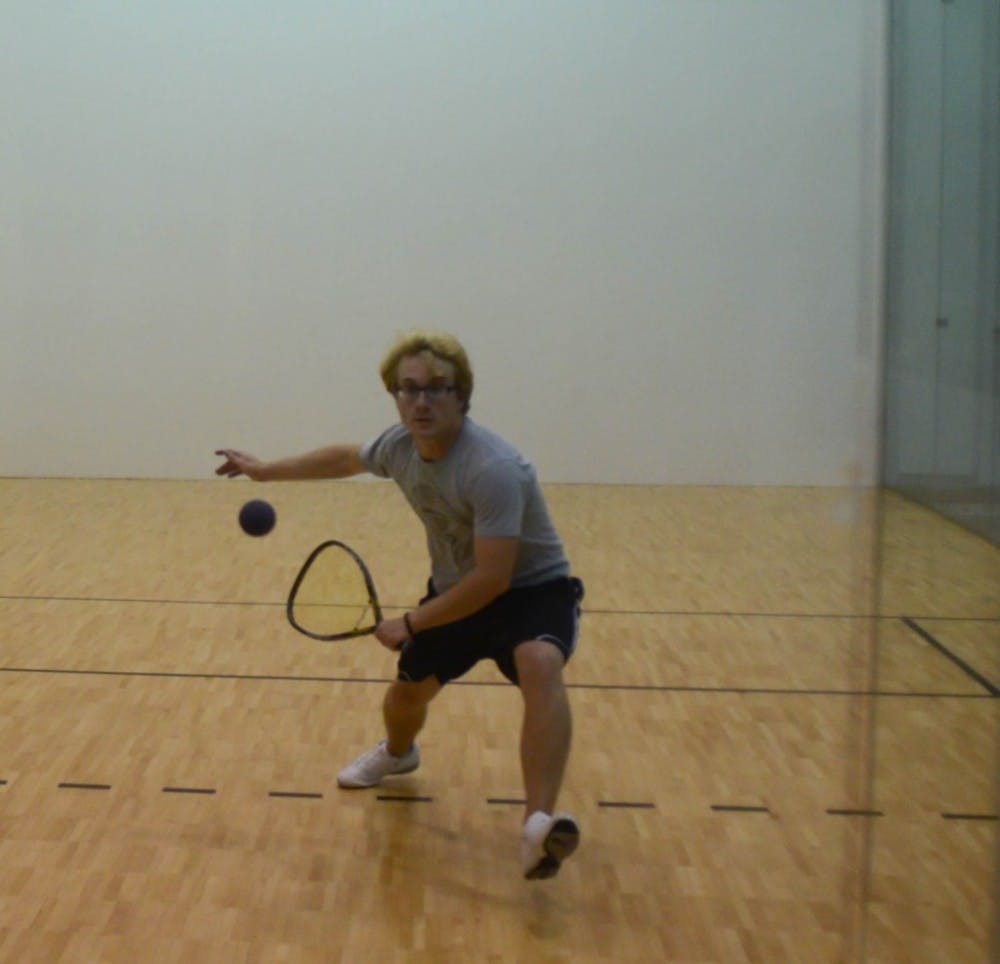“It sometimes feels like a sport past its prime,” said Music Lecturer Clay Stevenson. “You see references in advertising to 70s-looking nerds as the chief participants in the sport.”
The sport is racquetball, and in this case, the nerdy perception doesn’t match reality. Stevenson created a new competitive racquetball ladder at Elon University featuring ten participants, including two students.
A racquetball ladder is a system used to rank players within a particular club, with match pairings often being decided based off of these rankings.
The ladder that Stevenson has set up reflects wins and losses from five different groups of players each week. The winners either move up a group or stay at the top, while the losers either moving down a group or staying at the bottom.
Stevenson said the ultimate goal is to eventually have everyone paired with players close to their ability level.
Stevenson said he was inspired to start the ladder by Assistant Vice President for Facilities Management and Director of Physical Plant Robert Buchholz, who was participating in a separate ladder in Greensboro.
“Starting the ladder would be a nice addition to Elon’s campus, and give players from across campus reason to make time to play each other,” Stevenson said.
He said the university’s exceptional facility played a role in the formation of the ladder, acting as a catalyst for the new group.
Steven said the response has been good; there are twice as many participants as he initially anticipated. They form a diverse group, made up of seven faculty and staff members and two students. Among the participants are Vice President for Student Life and Dean of Students Smith Jackson and senior John Reece, who, according to Stevenson, won the intramural racquetball tournament last year.
But while participation has exceeded expectations, the ladder is still in its infancy, having started only three weeks ago. Stevenson said he expects it to grow, because it offers a unique service. In the very nature of how it operates, Stevenson’s ladder is different from many others.
For example, many ladders allow lower-ranked players to challenge players with higher rankings, which gives players the chance to improve or worsen their ranking at an accelerated rate.
But in this ladder, participants don’t challenge each other, but are grouped by their records. Stevenson said he feels this format has certain advantages that more common formats lack.
“I think this kind of ladder is more suited to a group with a wide range of skill levels,” he said. “There are players at almost every skill level playing in the ladder including division A, B, C and novice players.”
In others words, the way the ladder is constructed makes it accessible for anyone who wants to play and not exclusively for elite players.
Stevenson also likes the structure of the ladder because it keeps him, and all the other participants, playing consistently, but facing new opponents.
“I’m enjoying the exposure to players that I don’t typically connect with,” he said.
The ladder is still open at this point, and Stevenson says that anyone interested in participating can contact him directly. The current ladder will run until Thanksgiving. Stevenson will scramble the rankings, and competition will begin again in the spring.
If nothing else, it’s clear that racquetball, contrary to what advertisements might portray, is popular among groups besides fashion-challenged folk.


